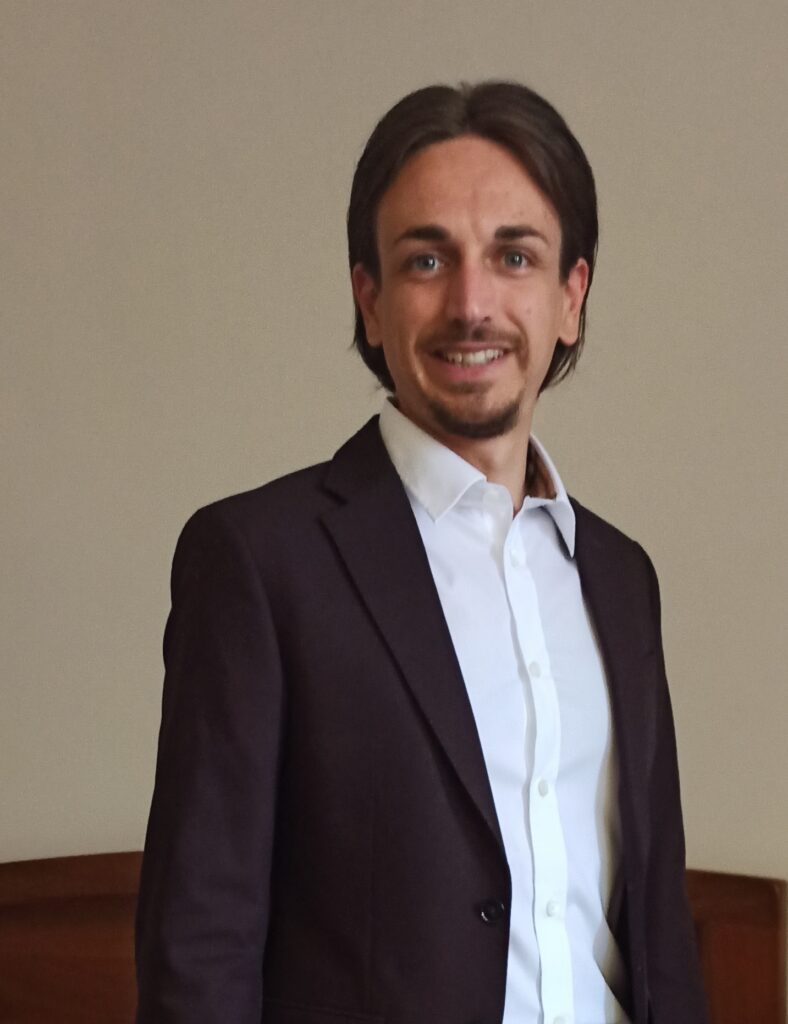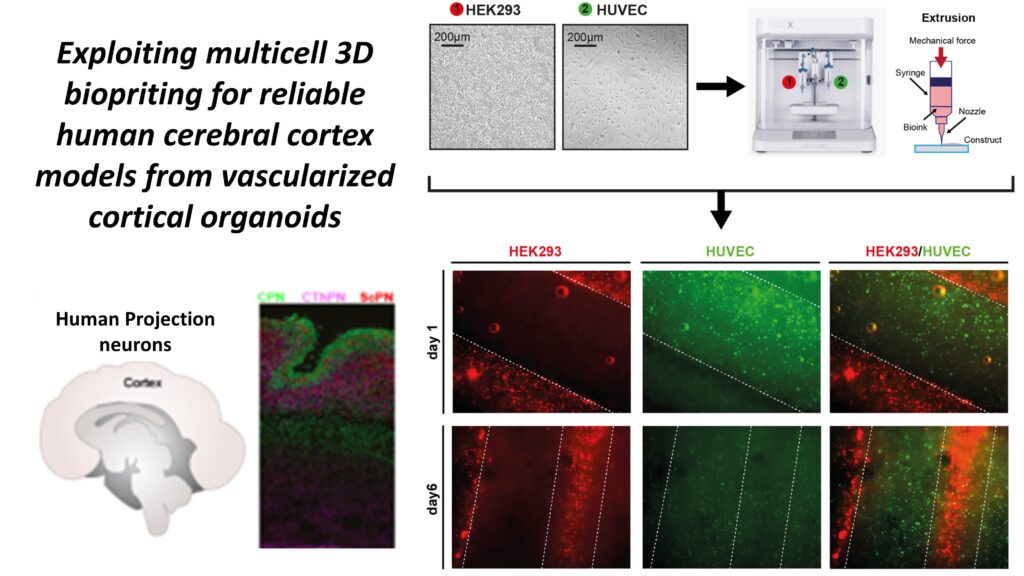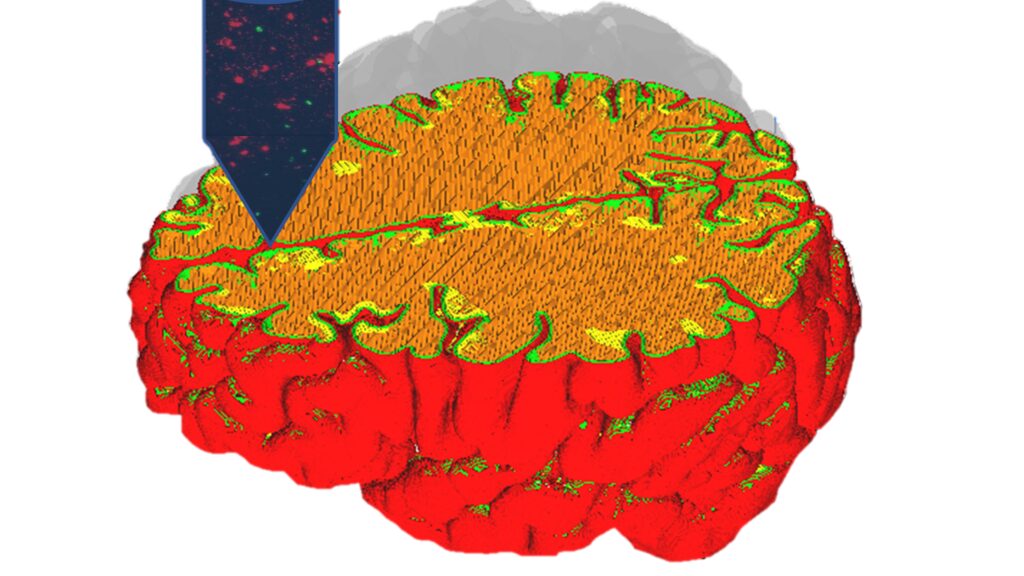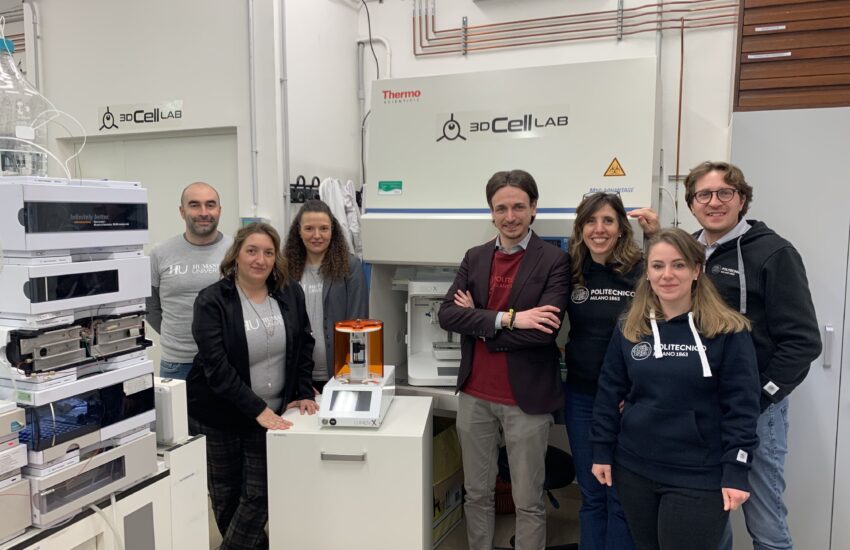Discovering the causes of neurological disorders using 3D-printed tissues: this is the aim of a project funded by Fondazione Cariplo as part of the “Biomedical research conducted by young researchers 2021” call which brings together the efforts of researchers at the Politecnico di Milano and Humanitas University
The research, named “Elucidating the molecular mechanisms underlying Pitt-Hopkins syndrome through the generation of 3D printed vascularized cortical organoids”, investigates the molecular causes of the onset and development of Pitt-Hopkins syndrome, a disease that affects the neural system, by creating an in vitro model of the human cerebral cortex by 3D bioprinting vascularised neural organoids (organ reproductions).
By accurately controlling the architecture of these systems through the use of most innovative 3D printing technology, it is possible to attempt to reduce the structural complexity of the cerebral cortex, with the aim of integrating neural circuits with their intricate support system (vascularization). This would be a turning point in making it possible to gather significant biological data over longer timescales than the models currently available.
The work is coordinated by the Politecnico di Milano researcher Mattia Sponchioni in collaboration with Dr Monica Tambalo from Humanitas. We asked Mattia to tells us more about his research and where he found his passion for this scientific field.
Mattia, what was it that led you to doing research at the Politecnico? How much did your studies contribute to this?
“I have always been fascinated by understanding the phenomena that surround us. From an early age, I have always tried to answer the question ‘why?’, which would spring up whenever I saw or experienced something new. Chemistry has helped me to answer some of these questions and, given my practical nature, deciding to enrol in chemical engineering at the Politecnico di Milano was easy, all things considered. Despite there being no lack of stressful and challenging moments during my studies, in hindsight I recognise that it was the best possible choice for my personality, giving me a way of indulging my curiosity and allowing me to learn a great deal. But, most of all, my studies have given me a way and flexibility of thinking, which have allowed me to move from industrial chemistry to biomedicine (almost) painlessly, by applying the same concepts and principles.”
Why did you choose chemical engineering? Your field of research reminds us more of biomedical engineering…
“That is a very interesting question, because it highlights and confirms the multidisciplinary nature of the research that I am conducting. Traditionally, a chemical engineer was thought of in relation to large manufacturing systems for consumer goods. This was strictly the case during the period of large industrial expansion and in general until the end of the last millennium. The advent of new technologies and the knowledge that have stemmed from them have changed this approach, placing the individual at the centre of the research. Effectively, a human being can be seen as a chemical system where transformations and separations occur, which are the bread and butter of a chemical engineer. Every organ can be thought of and modelled as a chemical reactor; however complex it might be. And as a whole, the different organs, tissues and blood vessels constitute an integrated process that converts raw materials into energy in a highly effective manner, and this is the basic principle of life. On an even smaller scale, a cell is an extremely complex chemical reactor; to the point that humans are not yet able to fully understand how it works, let alone reproduce it. This vision has always fascinated me and also pushed me towards an ever-greater understanding of such a complex “system”. It is precisely for this reason that I decided to bring a chemical engineer’s approach to the biomedical field through my research, trying to tackle complex problems from a different perspective, which historically has proven to be a good way of overcoming obstacles.”

“Without doubt, the common ground between my personal life and my work as a researcher is my curiosity, which, I have to admit, often translates as stubbornness in trying at all costs to understand the engineering and chemical principles that lurk behind even the most everyday phenomena and processes that might come to mind”.
Mattia Sponchioni
You are one of the researchers that is working on discovering the causes of neurological conditions using 3D-printed tissues with a project funded by Fondazione Cariplo as part of the “Biomedical research conducted by young researchers 2021” call, which brings together the efforts of researchers at the Politecnico di Milano and Humanitas University It sounds like a futuristic and very ambitious project. Could you tell us how this research is going and how the Politecnico knowledge and approach blends with that of the colleagues from Humanitas?
“I agree with its description as futuristic and ambition and I would like to add a third adjective: challenging, because of the complementary nature of the expertise required. I cannot deny that the first step in the research was to find vocabulary understood by us as Politecnico researchers and our Humanitas colleagues, who are accustomed to speaking very different languages. Finding a balance that made it possible to best express the specific skills of each research group is the key to taking on a multidisciplinary project like this one. Once this balance was found, the roles were defined quite naturally. The engineering component of the PoliMi researchers is dedicated to building and optimising the printing process, in addition to the medium used to support the growth of the neural cells. Our laboratories are equipped with the most recent 3D bioprinting technologies which guarantee high resolutions and reduced stress for the cells at the same time. On the other hand, the biological characterisation of the 3D-printed tissues is left to the Humanitas group, as they are experts in carrying out tests that make it possible to determine the cellular vitality and the expression of specific markers capable of giving key indicators in the study of the onset and progression of neurodegenerative disorders. The 3-year project is only just beginning but we are getting encouraging results. The first, which is not insignificant, is the ability to grow neural cells in printed constructs, controlling their shape and dimensions. Not only this, but also the ability to co-print other lines of cells, including endothelial cells, which we have shown can naturally form tubules that are similar to blood vessels. Reproducing the vascular system is, in effect, the biggest challenge for anyone involved with 3D bioprinting. Indeed, the supply of nutrients to the printed cells is fundamental to obtaining faithful models that can be studied over sufficiently long times so as to provide useful information. This will be the next step in our research, drawing on a team with all-round expertise in the field.”


Outside of the laboratory, how do you reconcile your personal life with that of a researcher? Do you have any hobbies that also help you in your work as a researcher?
“Without doubt, the common ground between my personal life and my work as a researcher is my curiosity, which, I have to admit, often translates as stubbornness in trying at all costs to understand the engineering and chemical principles that lurk behind even the most everyday phenomena and processes that might come to mind. Needless to say, I really like cooking, which itself involves more chemistry than you might think. I really enjoy experimenting with new recipes and methods. Most of all, I have developed a passion for the world of fermentation and homemade pizza. Any connection with chemical engineering that I can find gives me great satisfaction. 3D printing is another of my hobbies, which incidentally inspired the topic of the research funded by Fondazione Cariplo. Before I started printing neural cells, I took my first steps in 3D printing by creating household items. I have always found it exciting to be able to transform an idea into a tangible object, going through all the development, design and construction phases. This allowed me to learn new concepts which I then transferred to my research. If I am able to print a keyholder, controlling its shape and dimensions as I please, why can’t I print a functioning organ?”
Do you have any life-long dreams?
“My dream is undoubtedly to make a contribution to understanding the causes of diseases that are currently incurable and facilitating the development of diagnostic methods and treatments that could save lives. In fact, in addition to the project funded by Fondazione Cariplo, I am working on developing innovative processes for producing new medicines, which are proving to be very promising. I am talking for example about monoclonal antibodies and nucleic acids. Examples of these include the mRNA vaccines used in the fight against Covid-19. Despite their efficacy, the high costs of the treatments are often a stumbling block that prevents patients from using them. For this reason, I dream of creating awareness in the biopharmaceutical industry about the possibilities created by new technologies, including continuous processes and digitalisation in particular, in increasing the efficiency of production, thereby reducing costs and environmental impact. This is also the message that I try to communicate to my students, who represent the researchers and ruling class of tomorrow: do not let conservatism become an obstacle to development and the wellbeing of the human race.”

